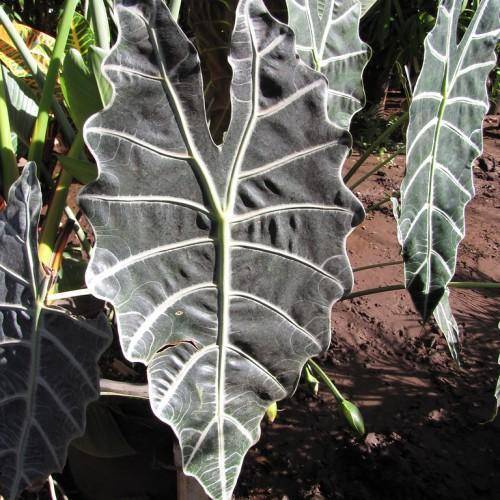
elephant's ear
Alocasia amazonica
Cycle:
Perennial
Watering:
Average
Hardiness Zone:
10 - 12
Flowers:
Flowers
Sun:
part shade,part sun/part shade
Leaf:
Yes
Growth Rate:
High
Maintenance:
Moderate
Poisonous To Humans:
Yes
Poisonous To Pets:
Yes
Drought Tolerant:
Yes
Invasive:
Yes
Tropical:
Yes
Indoors:
Yes
Care Level:
Medium
watering
Elephant's ear (Alocasia amazonica) should be watered regularly and evenly, but not too often. In general, water the plant when the top of the soil has dried out, usually every 4-5 days during the growing season. During the winter, the soil may need to be watered even less frequently. When watering, make sure to soak the soil fully and then allow it to dry out slightly before watering again. It’s important to make sure the soil isn’t consistently waterlogged, as this can cause root rot. It’s best to use room temperature water instead of cold water.
sunlight
Elephant's Ear (Alocasia amazonica) prefers bright, indirect sunlight. It thrives when placed near a sunny window or be placed under artificial light for approximately 12 hours a day. Too much direct sunlight can burn the leaves, so it should be placed in an area where the light is filtered by a sheer curtain or other type of filter. During the winter months when sunlight is much weaker, the plant may require additional lighting to maintain its health.
pruning
Elephant's ear (Alocasia amazonica) should only be pruned when absolutely necessary. Pruning should be done during the spring or early summer months and only when the plant needs to be maintained or reshaped. It is advisable to remove only dead or damaged leaves and flowers as well as any unsightly stems and foliage. Avoid cutting too much off at once, as this can stress out the plant and may cause it to decline. When necessary, cut back only 10-15% of the plant growth in order to maintain its shape and health.
